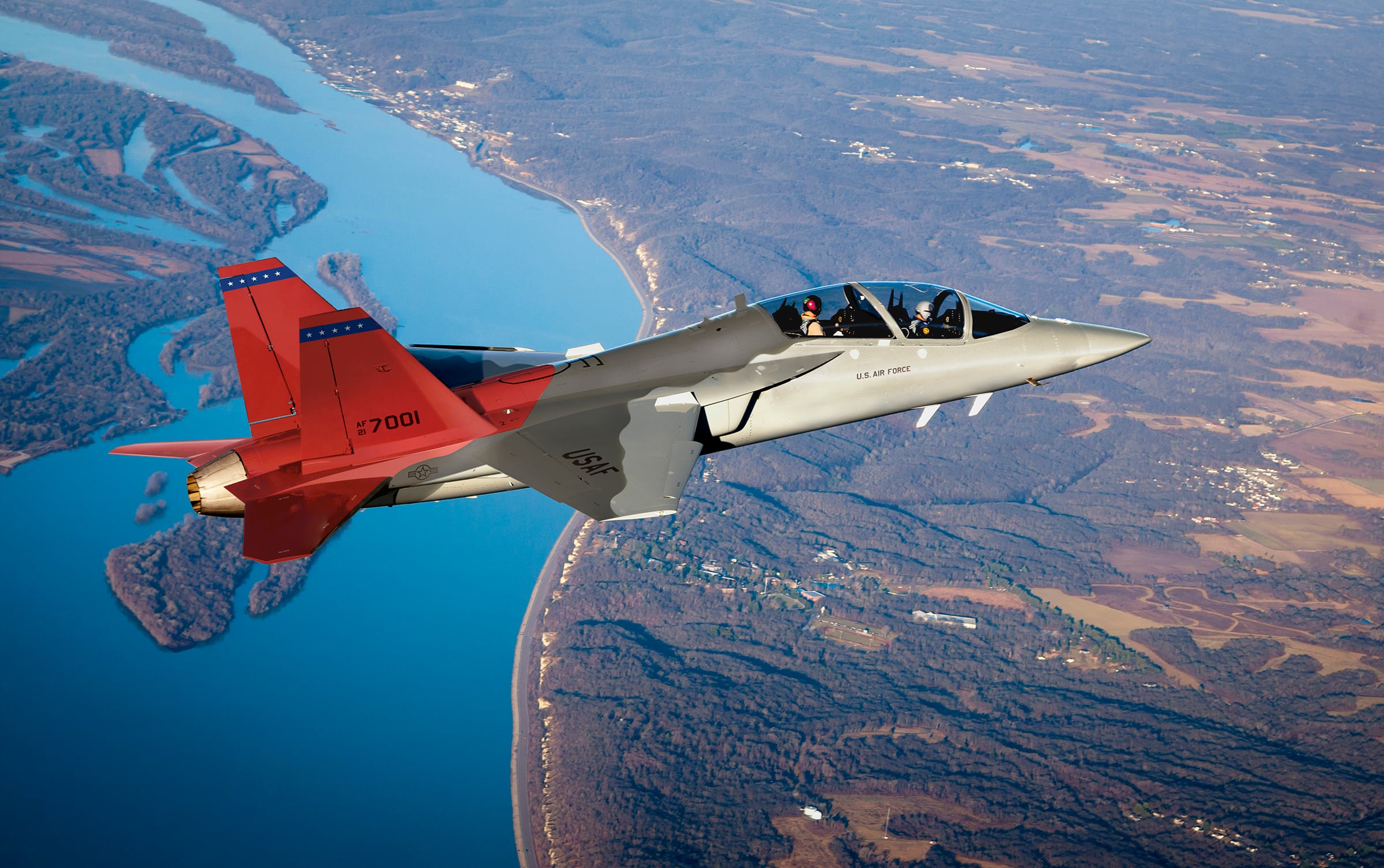WASHINGTON — Problems with the T-7A Red Hawk, including a potentially dangerous escape system and ejection seat, have caused the U.S. Air Force to push back a production decision and deliveries of the service’s next jet trainer aircraft.
The Air Force said in an email to Defense News that it now expects to make a decision on producing the T-7A in February 2025, and for the aircraft’s manufacturer Boeing to start delivering them in December that year. The schedule shift means the aircraft will now arrive at least two years later than the service originally intended.
It is the latest slide in the T-7′s schedule, after a December acknowledgement that problems with the aircraft’s design and testing caused the plane’s production to slip into 2024.
The delay was first reported by Air and Space Forces Magazine.
A Boeing spokesperson confirmed the re-baselining of the T-7′s schedule in an email to Defense News. “Our goal remains to get this new critical training capability in the hands of pilots,” the company said.
The Air Force plans to buy 351 T-7s to replace the T-38 Talon jet trainer, which the Air Force has flown since the early 1960s and is rapidly showing its age. The Air Force in 2018 awarded Boeing a $9.2 billion contract to build the new trainer.
Boeing touted the T-7′s digital design process and advanced manufacturing techniques as a potential model for designing and building aircraft faster and with fewer risks and defects. But problems, including concerns over the aircraft’s ejection seats and other emergency egress systems, have slowed progress.
The T-7 was designed to accommodate pilots with a wider range of body types and heights, as well as both male and female pilots. For years, Air Force aircraft and their cockpits were designed with fitting only men in mind, and women frequently found it difficult to receive clearance to fly.
But tests showed the T-7′s emergency escape system could be dangerous for some pilots. The Air Force said last December that 2021 tests found some ejecting pilots could be at a high risk of concussions, unsafe acceleration when parachutes open, or losing their visor at high speeds.
The escape system, as well as glitches with the T-7′s flight control software, led to the schedule slip announced last year. Boeing said in December that a fix to the flight control software problems was expected to head into testing in early 2023.
The Air Force said this month that it and Boeing began to re-baseline the T-7′s schedule in June 2022 to take into account delays caused by problems, including testing and hardware qualification challenges, aerodynamic instabilities such as a now-resolved “wing rock” problem, critical parts shortages caused in part by the pandemic, the escape system problems, and Boeing’s “inability to rapidly correct deficiencies.”
Wing rock refers to a problem in which the T-7′s wings could have dangerously rocked back and forth along the roll axis.
The risk assessment led the T-7 program office to recommend the Milestone C decision change to February 2025, which means the service now expects the first production aircraft to be delivered in December 2025.
Because a decision on production isn’t expected to occur until 2025, the Air Force said it opted to strike procurement funding for the program’s low-rate initial production in the fiscal 2024 budget request. The service originally expected to spend $322 million on procurement of the T-7 next year, according to documents accompanying the FY23 budget request.
The Air Force said it and Boeing are now confident the T-7′s escape system will be safe and effective, after making improvements to the system and testing. Minor adjustments to the seat have increased safety and reduced the risk to pilots, the Air Force said. The service said it and Boeing will also keep studying the ejection seat’s performance through the rest of this year to find other ways to improve the technology.
The Air Force said Boeing’s first two production-relevant T-7s are undergoing test flights at Boeing’s facility in St. Louis, Missouri.
Boeing is finishing construction of five engineering and manufacturing development T-7s, the Air Force said.
Boeing said those aircraft are expected to start their flight tests this summer in St. Louis. The Air Force said the first three are then scheduled to move to Edwards Air Force Base in California, where they will undergo flight testing in September.
Stephen Losey is the air warfare reporter for Defense News. He previously covered leadership and personnel issues at Air Force Times, and the Pentagon, special operations and air warfare at Military.com. He has traveled to the Middle East to cover U.S. Air Force operations.




